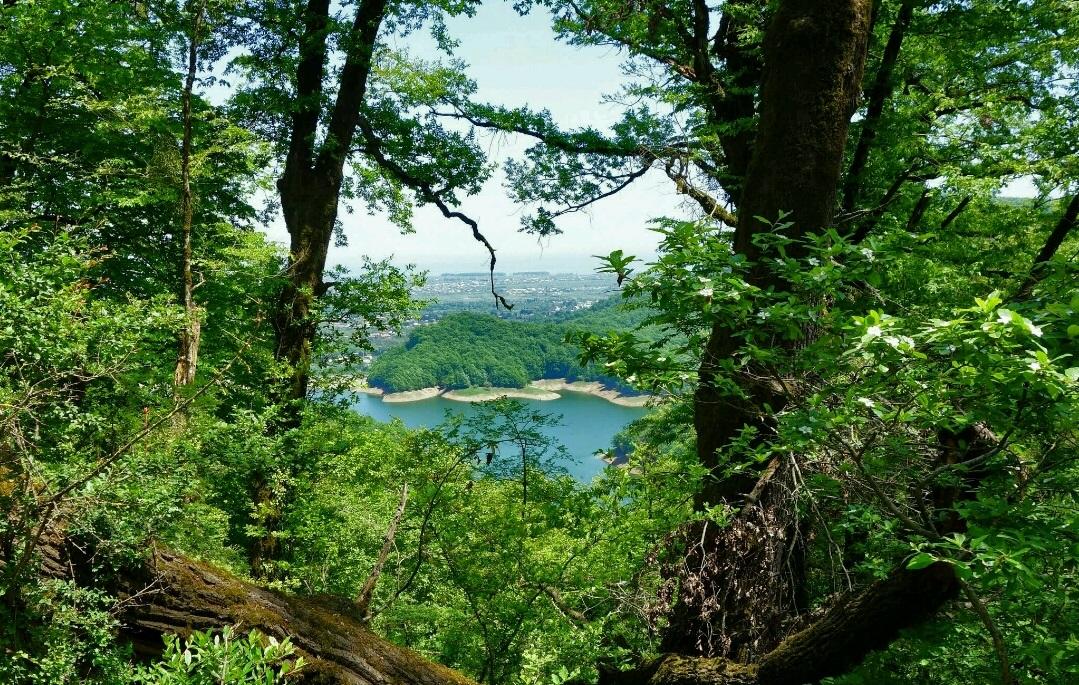Hirkan: Relic of world’s wildlife treasure

By Vugar Khalilov
As a relic of the Tertiary period, the Hirkan National Park is one of the world’s rarest intact and unpopulated areas. The park contains some 60million- years-old endemic species that survived the Ice Age period.
Located between the near-Caspian lowlands and the Talish Mountains in the south of Azerbaijan, the 40,000-hectare park is mostly covered by deciduous forests with over 150 endemic tree types. The region’s subtropical climate makes the park green and picturesque throughout the year.
The area has derived its name from the historical region of Hyrcania that composed of the land south-east of the Caspian Sea, which was mentioned by ancient Greek authors such as Strabo among others.
Climate
The Hirkan National Park was established within the administrative borders of Azerbaijan's Astara and Lankaran regions on the basis of the previous Hirkan State Reserve. In 2008, the park's territory was enlarged from 30,000 to over 40,000 hectares.
The park mostly lays on the Talish Mountains and also partially covers some areas in the Lankaran valley. It shelters the humid subtropical forests, various kinds of endemic plants and endangered animal species in the region.
The park’s ecosystem belongs to the Caspian Hyrcanian mixed forests ecoregion abundant with lush deciduous broad-leaved lowland and montane forests.
A high level of humidity and precipitation is specific for the area that ranges from 1,400 to 1,600 millimeters per year in the lowlands and to 1,800 millimeters per year in the mountains. The region also accounts for the highest annual precipitation in Azerbaijan.
A humid subtropical climate dominates in the lowlands of the park, while oceanic and continental climate zones prevail in the medium elevations and on the mountain peaks respectively.
Due to its complex landscape, high rate of annual rainfall, and impenetrable forests, it is rich in biodiversity.
Rich, endemic biodiversity
The Hirkan forests account for over 435 trees and bushes. Of them, 150 are considered endemic that is exclusively specific for the area. One of the endemic tree species, the ironwood tree for its strong stem and extraordinary look is considered an iconic symbol of the national park.
The park hosts numerous endemic and endangered tree species such as the Hyrcanian box tree, Caucasian pear, Lankaran acacia, chestnut-leaved oak, Caucasian oak, Caucasian ash, European ash, European hornbeam, Oriental hornbeam, Oriental beech, Caucasian persimmon, Caspian locust tree, Caucasian alder, Caucasian wingnut, Persian ironwood, Caucasian zelkova, butcher's broom (Ruscus aculeatus), sweet chestnut to name but a few.
Shrub species that exist in the area include the poet's laurel, Hyrcanian holly, greenbrier, common ivy among many others.
Along with its diverse flora, the national park is also rich in its animal species. The Hirkan forest protects rare birds such as Caucasus pheasant, Caspian tit, and the mammals like the jungle cat, Caspian tiger, brown bear, red fox, Asian leopard, striped hyena, wolf, lynx, jackal, badger, otter, weasel, raccoon, beech marten, which are listed as endangered animal species.
Reforestation, animals' protection
The government implemented a range of programs to preserve and expand the park's territory.
The reforestation in some parts of the Lankaran lowland, which were previously used for agricultural purposes, has started The program is aimed at restoring the forest and enlarging the park's area.
Moreover, Azerbaijan has submitted necessary documents to the UNESCO Secretariat to get the Hirkan National Park along with the Caspian Hyrcanian forests respectively included into UNESCO's World Heritage Site list of cultural and natural heritage and the Biosphere Reserves Program.
Footages of the Caucasian leopard were captured using camera traps in 2019 during regular monitoring by the IDEA Public Union and the World Wildlife Fund (WWF) within the scope of restoring the leopard population on the park territory.
The Caucasian leopard is one of the biggest of the eight recognized subspecies of leopard, which predominantly live in remote, mountainous areas.
By the early 2000s, very little information was available about leopards living in Azerbaijan and since the 20th century, the leopard is listed in the Red Book. Several years ago, three young leopards were born in the Hirkan National Park.
The IDEA Public Union has developed the Caucasus Big Five project that aims to protect the Caucasian leopard by drawing both local and international attention to the problem via public education, scientific seminars and workshops for students.
The Hirkan National Park is a unique tourist venue with its breathtaking landscape and rich biodiversity. Although there are no tourist facilities within the park, the adjacent cities such as Lankaran and Astara offer a broad range of services to tourists.
--
Follow us on Twitter @AzerNewsAz
Here we are to serve you with news right now. It does not cost much, but worth your attention.
Choose to support open, independent, quality journalism and subscribe on a monthly basis.
By subscribing to our online newspaper, you can have full digital access to all news, analysis, and much more.
You can also follow AzerNEWS on Twitter @AzerNewsAz or Facebook @AzerNewsNewspaper
Thank you!
